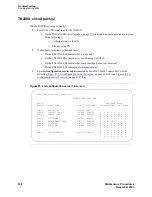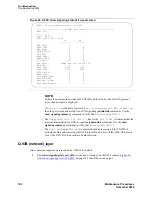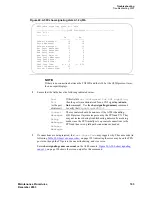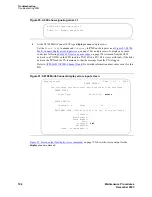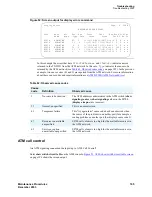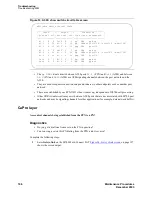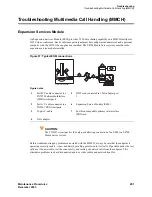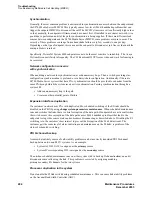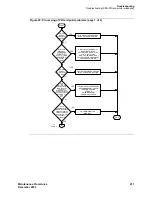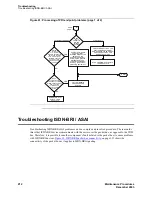
Troubleshooting
Troubleshooting ATM
Maintenance Procedures
199
December 2003
Unusual ATM trouble conditions
There are a few failure modes in the S8700 Multi-Connect/A500 combination that are particularly
difficult to diagnose. One example might be that you can’t make a completely successful call, even
though most indications from S8700 Multi-Connect and the A500 look pretty good. This section
documents some hints and clues that may help diagnose the following failure modes:
•
Incorrect PN Route or End System Identifier (A500)
•
Swapped Routes, End System Identifiers, or Fiber between a PPN and a PN
•
Swapped Routes, End System Identifiers, or Fiber between A- and B-side TN230Xs in a PN
•
Swapped Routes, End System Identifiers, or Fiber between two PNs
Incorrect PN Route or End System Identifier
(A500)
Symptoms
One-way talk paths from the PPN to a PN. You can hear tones from the PPN’s end station to a PN’s end
station, but not vice versa. Since a signaling channel is a bidirectional VC established from the PPN to a
PN, these can be routed correctly and come up just fine. However, a single call’s talk path consists of two
unidirectional VCs — one from the PPN to a PN (which is routed correctly) and another from the PN to
the PPN (which cannot be routed).
Diagnostics
1
At the A500 use the show signaling routes or show signaling esi command(s) as appropriate to
check the ATM addresses.
2
Use show signaling stats port q93b on the PN’s port, and look for cause code 3 (
No route to
destination
).
Action
Correct the ATM address translations in the A500.
Swapped Routes, End System Identifiers, or
Fiber between a PPN and a PN
Symptoms
•
An incorrectly connected PN TN230X does not complete board insertion.
•
Dial tone is present for correctly connected PNs, but not for an affected PN’s end stations.
•
Calls cannot be made between the PPN and correctly connected PNs, because talk paths cannot be
routed correctly.
Diagnostics
The show switch circuit table command on the A500 shows VBR control channels from the A500 port
intended for the incorrectly connected PN (but actually connected logically or physically to the PPN) that
should not exist.
Summary of Contents for CMC1
Page 1: ...Maintenance Procedures 555 245 103 Issue 1 1 December 2003 ...
Page 14: ...Contents 14 Maintenance Procedures December 2003 ...
Page 416: ...Additional maintenance procedures IP Telephones 416 Maintenance Procedures December 2003 ...
Page 426: ...Index X 426 Maintenance Procedures December 2003 ...


